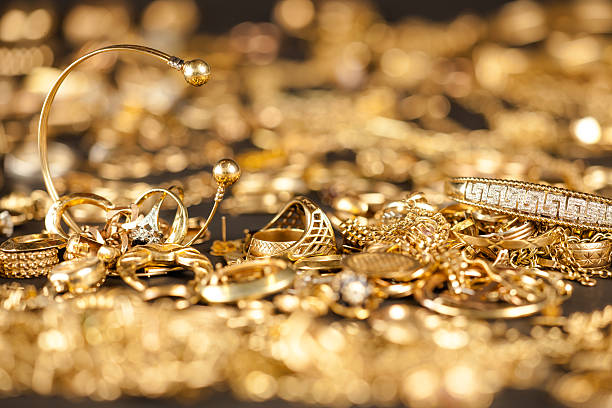When it comes to selecting the perfect engagement ring or fine jewelry, two critical factors dominate the discussion: the metal used in the band and the quality of the stone adorning it. Today, more couples are considering platinum or gold ring set with lab-grown diamonds as they seek a blend of luxury, sustainability, and affordability. This guide aims to provide an in-depth exploration of these options, empowering you to make an informed decision that aligns with your values and style.
Understanding Lab-Grown Diamonds
Lab-grown diamonds, also known as synthetic diamonds, are real diamonds that are created in controlled laboratory environments. They possess the same physical, chemical, and optical properties as natural diamonds but are often more affordable. The process of creating these diamonds involves replicating the natural conditions that form diamonds in the earth, either through High Pressure High Temperature (HPHT) or Chemical Vapor Deposition (CVD) methods.
One of the primary appeals of lab-grown diamonds is their ethical nature. They are not associated with the controversial mining practices often linked to natural diamonds, which can have significant social and environmental impacts. Furthermore, lab-grown diamonds typically cost 20-40% less than their natural counterparts. This price difference allows consumers to purchase larger, higher-quality stones without breaking the bank. Additionally, lab-grown diamonds can be created with specific characteristics in mind, ensuring a higher level of purity and clarity. Most lab-grown diamonds are graded similarly to natural diamonds, often receiving ratings of VS1 or higher.
Choosing Between Platinum and Gold Rings
When selecting the perfect setting for your lab-grown diamond, the choice between platinum and gold can significantly influence the ring’s overall appearance, durability, and value. Each metal has unique characteristics that cater to different preferences.
Platinum Rings: The Pinnacle of Luxury
Platinum is often considered the ultimate choice for fine jewelry due to its durability, density, and purity. Platinum is a dense metal, making it exceptionally resistant to wear and tear. Unlike gold, which can scratch and tarnish over time, platinum retains its luster, making it an ideal choice for everyday wear. Its hypoallergenic properties also make it suitable for individuals with sensitive skin or allergies to other metals.
The silvery-white hue of platinum complements the brilliance of lab-grown diamonds beautifully. Its understated elegance makes it a timeless choice that never goes out of style. Moreover, platinum has a natural weight that adds to its perception of quality, often making it the preferred choice for those who value luxury and longevity in their jewelry.
Gold Rings: A Classic Choice
Gold, available in several alloys including yellow, white, and rose, offers a warmth and richness that many find appealing. Yellow gold is a classic choice that is warm and traditional, enhancing the yellowish hues found in some diamonds and making it suitable for those who prefer a more vintage or romantic aesthetic.
White gold, often rhodium-plated to give a bright white finish, offers a modern look that beautifully showcases the clarity of lab-grown diamonds. However, the rhodium plating may need to be reapplied over time to maintain its luster. On the other hand, rose gold has gained popularity for its distinctive pinkish hue. It pairs wonderfully with a variety of diamond shapes and settings, adding a unique twist to traditional ring designs. Each type of gold presents its own charm and allows for personal expression through the choice of color and alloy.
Design Considerations for Platinum and Gold Rings
The design of your ring plays a crucial role in highlighting the beauty of the diamond. Common setting styles include the classic solitaire, where a single lab-grown diamond stands out as the centerpiece, emphasizing its brilliance and timelessness. Alternatively, a halo setting surrounds the central diamond with a circle of smaller diamonds, enhancing its visual impact and creating the illusion of a larger stone.
Another popular option is the three-stone setting, which symbolizes the past, present, and future of a relationship. This design features a central diamond flanked by two smaller stones, offering a romantic touch and the opportunity to customize with additional lab-grown diamonds. The choice of setting not only influences the overall aesthetic but also affects how the diamond interacts with light, further enhancing its sparkle.
Customization allows couples to create a unique piece that reflects their style. Adding personal engravings can make the ring truly one-of-a-kind, allowing couples to inscribe messages, dates, or meaningful symbols into the band. Incorporating additional lab-grown diamonds or colored gemstones can elevate the ring’s overall aesthetic. For example, vibrant sapphires or emeralds can add a pop of color and make the design stand out. Additionally, exploring unique diamond shapes, such as princess, oval, cushion, or pear, can significantly influence the overall style of the ring.
Caring for Your Platinum or Gold Ring with Lab-Grown Diamonds
Maintaining the beauty of your ring is essential for longevity. Regular cleaning is crucial for keeping your ring sparkling. A gentle solution of warm water and mild dish soap, along with a soft brush, can effectively remove dirt and oil. Rinsing thoroughly and drying with a soft cloth will ensure your ring looks its best.
It is advisable to take your ring to a jeweler for professional cleaning and inspection every six months. This proactive approach will help identify any loose stones or signs of wear that need attention. When not wearing your ring, store it in a soft pouch or a lined jewelry box to prevent scratches and damage. Avoid placing it alongside other jewelry pieces that may cause harm.
Final Thoughts: Choosing Your Perfect Ring
Opting for a platinum or gold ring featuring lab grown diamonds is a decision that reflects both personal style and ethical considerations. Whether you gravitate towards the unmatched durability of platinum or the classic beauty of gold, lab-grown diamonds provide an exceptional and sustainable alternative to natural stones.







:max_bytes(150000):strip_icc()/alekon-pictures-yj4kwA4h_Ms-unsplash-230509491f114970902d0e9aefb37850.jpg)



